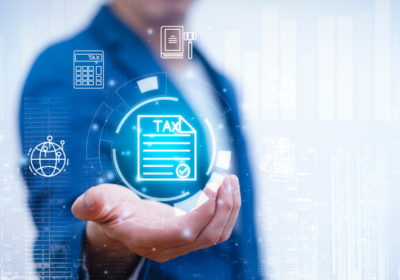
- Author: Nicole Cox
- Posted: October 6, 2022
Tax, Tech & EX: How Corporate Tax departments are striking the optimal balance between technology & talent
Businesses are under mounting pressure to introduce tax technology to improve productivity and efficiency, amid a new survey that reveals more than half of tax professionals surveyed do not believe they have adequate resources to counter the challenges they face.
The results of Thomson Reuters’ 2022 State of Corporate Tax survey were discussed as part of the CFO Lunchtime Live Series, Tax, Tech and EX: How Corporate Tax departments are striking the optimal balance between technology and talent.
Moderated by James Solomons, Global CFO at Xref, the panel discussion drew insight from Thomson Reuters’ Direct Tax Proposition Lead, Amanda Tan, and Deloitte Australia Tax Partner, Abs Osseiran.
Digitisation of tax regimes
Ms Tan said the use of tax technology had presented as a major theme in the survey, with a quarter of respondents stating that tax-specific technology and automation would help address growing digitisation and changing government requirements across the sector.
“Given the increasing digitisation of tax regimes around the world…technology sits at the heart of all of those factors, which are pulling tax teams in multiple directions at once,” Ms Tan said.
The insight comes as Australian Taxation Office (ATO) Commissioner Chris Jordan told the Xerocon conference in Sydney in early September that the ATO planned to be fully digitised by 2030 with integrated systems and real-time access.
Yet despite the ATO’s digital strategy, 70% of poll respondents during the CFO Lunchtime Series event on 21 September self-reported that they are chaotic or reactive when it comes to tax digitisation and managing the demands in their tax department.
Ms Tan noted that “2030 is not that far away. This is a good opportunity for tax teams to really reimagine and transform their processes from end-to-end and do it in a way that ensures you have confidence in your tax data.”
“What does your existing tax data even look like and what are the gaps and issues? What are the limitations and inefficiencies around your existing processes, and then how do you layer in technology and automation in a way that gets you greater value out of your tax data?”

Mr Osseiran said from his experience, modern day tax departments are navigating challenges around the increasing appetite for data from regulators – both domestically and internationally – as well as navigating these same challenges with the increasing need for data from internal stakeholders.
In the Australian context, he said the ATO are seeking assurances over governance or the infrastructure of tax in organisations, which is helping them to focus their questions in more targeted requests for information (RFIs).
“Regulators, both tax and non-tax, are increasingly becoming digitised and that’s driving this insatiable desire or need for more data for them to create more insights both on the organisation as a taxpayer, but also more insights on the economy as a whole to help [their own] funding decisions,” he said. “They just can’t seem to get enough of data.”
Increased time for professional development
With the impacts of the COVID pandemic and the Great Resignation leading to a critical shortfall in talent, experts agree investing in technology solutions would allow workers more time to engage in strategic work and professional development.
Ms Tan said technology was central to most working environments nowadays, with fewer workers physically centralised and most transitioning to virtual or hybrid roles.
“When implemented and leveraged to its fullest potential, tax technology introduces so many efficiencies and time savings that are instrumental to enhancing the employee experience,” she said.
“It frees up more of your time to really focus on your professional development goals. This is key given 64% of tax employees surveyed said that time constraints are what prevent them from improving their professional skills.”
“It also allows staff to focus less on the mundane tasks… and more on work that allows them to think at a higher level, in turn increasing engagement and assisting with the development of more well-rounded tax professionals.”
Mr Osseiran said spreadsheets and data input had long been a “pain point”. He agreed technology had real potential to remove or minimise some of the routine or mechanical tasks so employees could focus on professional development and career progression.
“A lot of people tend to focus on the ‘cost out’ pieces of implementing technology – that if you implement technology, you can take cost out, but really what it’s about is focusing your team on the right tasks and providing them with more rewarding roles or opportunities to help develop themselves,” he said.
Ms Tan said the changing dynamic of the tax profession meant there was never a more important time to invest in tax technology. Not only does it help minimise the pressure on employees, but it also bridges the skill gap given 43% of participants identified tax technology as the biggest skill gap they needed to address to advance their careers.

“In order to better to satisfy the demands…tax professionals need to have a skillset that not just looks at the tax technical side of things, but is also able to analyse and draw insights out of their tax data and use tax technology.”
Mr Osseiran said Deloitte had started to remove manual processes in its tax operations to gain better efficiency and improve the employee experience. This includes transitioning mundane, administrative and data practices to automation.
“What we are doing in terms of retaining or trying to attract new talent is very similar to what corporates are needing to do and that’s transform the way that they’re operating,” he said.
“We are looking at all our manual processes and we’re trying to get rid of all of those. We’re really trying to introduce productivity and efficiency through the use of technology, whether it’s client onboarding, reviews, or the completion of tax compliance. We’re trying to streamline and make those pain points disappear for our team.”
“The great way of doing that is through the use of technology. We’re not just throwing additional people at issues…What we’re trying to do is actually fix the fundamental issue and a lot of the time the answer is through implementing some form of solution whether it’s automation or something else to free up people’s time.”




